
The Academy of American Poets launched National Poetry Month in April 1996 to celebrate poets across the United States and has become the largest literary celebration in the world. As one of the oldest literary art forms, poetry has likely existed in some format for even longer than written language.
Poetry includes many formats including haikus, sonnets, limericks, free verse and more. You may be familiar with some of the world’s most well-known poems such as William Shakespeare’s sonnets or The Epic of Gilgamesh, which is widely considered the world’s oldest poem, composed 4,000 years ago in ancient Mesopotamia. Some of the most famous poets from the United States include Robert Frost, Maya Angelou, Walt Whitman, Emily Dickinson, and Sylvia Plath. You can search for your favorite poet or book of poetry in the library catalog.
Here are some ways you can celebrate National Poetry Month:
- Try your own hand at writing a poem or two
- Check out a book or e-book of poetry from the library
- Sign up for a poetry class or workshop
- Read and share poems about the environment in honor of Earth Day
- Read about your state poet laureate
- Attend an Alachua County Library District program that celebrates poetry.
- Attend the 3rd Annual BARD & Broadside: North Central Florida Poetry Festival. The Festival will take place April 5 - 26, 2025 at several locations in Gainesville, FL. The multi-day poetry festival will feature poetry readings, creative writing workshops, storytelling, youth poetry / monologue competition, community open mics.
The following poetry themed events will be taking place across the Alachua County Library District this month:
- Saturday, April 5: Word Slay: Standing on Words presented by ARTSPEAKSgnv, Inc., Headquarters Library, 1 p.m.
- Thursday, April 10: ArtSpace: Visual Journaling: National Poetry Month, Waldo Branch, 4 p.m.
- Saturday, April 12: The Art of Poetry, Archer Branch, 11 a.m.
- Saturday, April 12: ArtSpace: Visual Journaling: National Poetry Month, Waldo Branch, 2 p.m.
- Wednesday, April 30: Fun with Poetry: Celebrating National Poetry Month, Tower Road Branch, 3 p.m.
In the meantime, enjoy the poem below by Robert Louis Stevenson, a Scottish novelist, essayist, poet and travel writer best known for his works like Treasure Island and The Strange Case of Dr. Jekyll and Mr. Hyde.
"My Shadow" by Robert Louis Stevenson
I have a little shadow that goes in and out with me,
And what can be the use of him is more than I can see.
He is very, very like me from the heels up to the head;
And I see him jump before me, when I jump into my bed.
The funniest thing about him is the way he likes to grow—
Not at all like proper children, which is always very slow;
For he sometimes shoots up taller like an India-rubber ball,
And he sometimes gets so little that there’s none of him at all.
He hasn’t got a notion of how children ought to play,
And can only make a fool of me in every sort of way.
He stays so close beside me, he’s a coward you can see;
I’d think shame to stick to nursie as that shadow sticks to me!
One morning, very early, before the sun was up,
I rose and found the shining dew on every buttercup;
But my lazy little shadow, like an arrant sleepy-head,
Had stayed at home behind me and was fast asleep in bed.
This poem is in the public domain.
Finally, keep reading to check out some fantastic poetry books from the library’s collection:

Time is a Mother by Ocean Vuong
Ocean Vuong's second collection of poetry looks inward, on the aftershocks of his mother's death, and the struggle - and rewards - of staying present in the world. Time Is a Mother moves outward and onward, in concert with the themes of On Earth We're Briefly Gorgeous, as Vuong continues, through his work, his profound exploration of personal trauma, of what it means to be the product of an American war in America, and how to circle these fragmented tragedies to find not a restoration, but the epicenter of the break
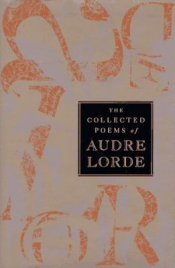
The Collected Poems of Audre Lorde by Audre Lorde
Collected here for the first time are more than three hundred poems from one of this country's major and most influential poets, representing the complete oeuvre of Audre Lorde's poetry. Lorde published nine volumes of poetry which, in her words, detail "a linguistic and emotional tour through the conflicts, fears, and hopes of the world I have inhabited." Included here are Lorde's early, previously unavailable works: The First Cities, The New York Head Shop and Museum, Cables to Rage, and From a Land Where Other People Live.
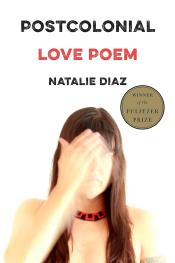
Postcolonial Love Poem by Natalie Diaz
Postcolonial Love Poem is an anthem of desire against erasure. Natalie Diaz's brilliant second collection demands that every body carried in its pages--bodies of language, land, rivers, suffering brothers, enemies, and lovers--be touched and held as beloveds. Through these poems, the wounds inflicted by America onto an indigenous people are allowed to bloom pleasure and tenderness: "Let me call my anxiety, desire, then. / Let me call it, a garden." In this new lyrical landscape, the bodies of indigenous, Latinx, black, and brown women are simultaneously the body politic and the body ecstatic. In claiming this autonomy of desire, language is pushed to its dark edges, the astonishing dunefields and forests where pleasure and love are both grief and joy, violence and sensuality. Diaz defies the conditions from which she writes, a nation whose creation predicated the diminishment and ultimate erasure of bodies like hers and the people she loves: "I am doing my best to not become a museum / of myself. I am doing my best to breathe in and out. // I am begging: Let me be lonely but not invisible." Postcolonial Love Poem unravels notions of American goodness and creates something more powerful than hope--a future is built, future being a matrix of the choices we make now, and in these poems, Diaz chooses love.
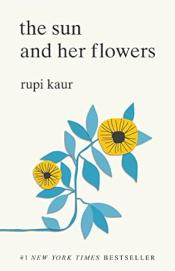
The Sun and Her Flowers by Rupi Kaur
Divided into five chapters and illustrated by kaur, the sun and her flowers is a journey of wilting, falling, rooting, rising, and blooming. A celebration of love in all its forms.
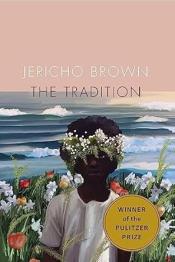
The Tradition by Jericho Brown
Jericho Brown’s daring new book The Tradition details the normalization of evil and its history at the intersection of the past and the personal. Brown’s poetic concerns are both broad and intimate, and at their very core a distillation of the incredibly human: What is safety? Who is this nation? Where does freedom truly lie? Brown makes mythical pastorals to question the terrors to which we’ve become accustomed, and to celebrate how we survive. Poems of fatherhood, legacy, blackness, queerness, worship, and trauma are propelled into stunning clarity by Brown’s mastery, and his invention of the duplex—a combination of the sonnet, the ghazal, and the blues—is testament to his formal skill. The Tradition is a cutting and necessary collection, relentless in its quest for survival while reveling in a celebration of contradiction.
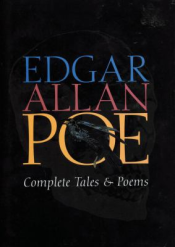
The Complete Tales and Poems of Edgar Allan Poe by Edgar Allan Poe
One of the most original American writers, Edgar Allan Poe shaped the development of both the detective story and the science-fiction story. Some of his poems--"The Raven," "The Bells," "Annabel Lee"--Remain among the most popular in American literature. Poe's tales of the macabre still thrill readers of all ages. Here are familiar favorites like "The Purloined Letter." "The Fall of the House of Usher," and "The Murders in the Rue Morgue," together with less well-known masterpieces like "The Imp of the Perverse," "The Narrative of A. Gordon Pym" and "Ligeia," which is now recognised as one of the first science-fiction stories, a total of seventy-three tales in all, plus fifty-three poems and a generous sampling of Poe's essays, criticism and journalistic writings.
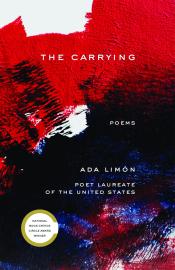
The Carrying: Poems by Ada Limón
Vulnerable, tender, acute, these are serious poems, brave poems, exploring with honesty the ambiguous moment between the rapture of youth and the grace of acceptance. A daughter tends to aging parents. A woman struggles with infertility—“What if, instead of carrying / a child, I am supposed to carry grief?”—and a body seized by pain and vertigo as well as ecstasy. A nation convulses: “Every song of this country / has an unsung third stanza, something brutal.” And still Limón shows us, as ever, the persistence of hunger, love, and joy, the dizzying fullness of our too-short lives. “Fine then, / I’ll take it,” she writes. “I’ll take it all.”
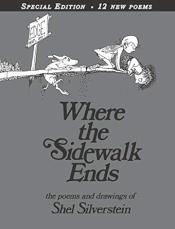
Where the Sidewalk Ends: The Poems & Drawings of Shel Silverstein by Shel Silverstein
Shel Silverstein, the New York Times bestselling author of The Giving Tree, A Light in the Attic, Falling Up, and Every Thing On It, has created a poetry collection that is outrageously funny and deeply profound. Come in...for where the sidewalk ends, Shel Silverstein's world begins. This special edition contains 12 extra poems. You'll meet a boy who turns into a TV set, and a girl who eats a whale. The Unicorn and the Bloath live there, and so does Sarah Cynthia Sylvia Stout who will not take the garbage out. It is a place where you wash your shadow and plant diamond gardens, a place where shoes fly, sisters are auctioned off, and crocodiles go to the dentist. Shel Silverstein's masterful collection of poems and drawings stretches the bounds of imagination and will be cherished by readers of all ages.
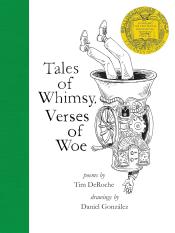
Tales of Whimsy, Verses of Woe by Tim DeRoche
Tales of Whimsy, Versus of Woe is quite possibly the most dangerous book of poetry ever written. Do you dare? It's so good it will make you sneeze. What becomes of a girl who absolutely detests the color green? What about a king who joins a punk band? And the little boy who calls up God on the telephone? Monsters, bears, wizards, and talking vegetables-this book has something for everyone. Winner of the prestigious Baldersquash Medal, which honors the very best in highfalutin nonsense.
Descriptions adapted from the publisher.